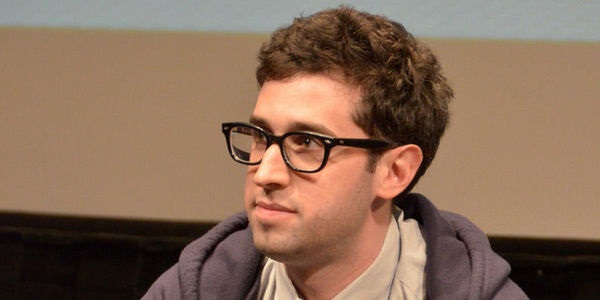
So, I kinda really liked the graffiti/coming-of-age street yarn, Gimme the Loot, and you can check out my review here if you don’t believe me. As it happens, I also recently had the opportunity to chat with director Adam Leon about the film- what inspired and influenced it, how the production came together, the process and preparation that went into it, and the importance of maintaining cultural authenticity. Read on to absorb his insights into the movie:
Go, See, Talk!: The first thing that I have to ask, as a fan of hip hop: I’m really curious about the title. Is that something you all came up with while you were shooting, or is that your personal shout-out to Biggie Smalls?
Adam Leon: I had the title very early on, and obviously it’s inspired by Mr. Smalls. I just thought it was a good title for the type of movie we were telling, which is very much an urban story. There’s a heist element to it. It’s very much an adventure and it’s fun, and it’s very active.
GST: So, I know you like Biggie and you seem to like hip hop a lot- I was wondering, are those the things that drew you to the culture of graffiti art, since they all do go hand in hand?
AL: Yeah, sort of. I was working with these graffiti writers on a different project, and I became fascinated with them and the idea that they are, in a way, real life action heroes, in a very low-rent, authentic way, taking these incredible physical and legal risks for really no monetary gain. It felt like a great fit for the type of story we wanted to tell. Obviously there’s a huge relationship between hip hop and graffiti, but I’m not sure it comes out of that as much as it comes out of working on these characters and the tone of the story.
GST: Have you ever done graffiti at any point yourself in your life?
AL: No, no, I’m pretty bad with a pen. I messed around with it literally for three or four days when I was a teenager, and I’ve had some friends who are pretty serious writers, but I’m terrible. I’m not good for that.
GST: There’s this sense of realism and authenticity to what we’re watching with this film. Are any of the leads or members of the supporting cast writers themselves?
AL: What we did was, we brought in this legendary, expert graffiti writer named SP-One, and he would do a graffiti class every week where he would come in and not only teach the actors the art and give them homework assignments and train them to be graffiti writers, but also talk about the culture, the language, personal anecdotes, and the way that a graffiti writer looks at the city and how they move around. That was really important to establishing authenticity in terms of the graffiti.
GST: Do you think people who are in the know might have picked up on it if you hadn’t reached for that authenticity? Was that something that was a concern to you?
AL: Oh yeah, definitely. I went to SP-One very early and I said to him, “When you see this movie, you’ve gotta think that we nailed it. That’s key. If you don’t think we nailed it, people who don’t even know about graffiti are going to be able to tell even if they can’t put their finger on it.” I think that audiences are very savvy, and if it doesn’t feel right, it’s not going to be able to pass the smell test, so it was absolutely essential that we nailed that.
It was also essential for us that we were creating characters that felt like typical graffiti writers, because Malcolm and Sofia aren’t the best graffiti writers in New York but they are very much of that culture. We were trying to do typical graffiti writers, not the most amazing graffiti writers, and they’re going to get discovered by the gallery owner! It wasn’t that, but they’re really of this culture, and they felt genuine in that way.
GST: Yeah, it felt a lot more like the movie was interested in graffiti as a coming of age for these characters rather than a means of breaking out for them. There’s a real sense of love for these two kids throughout the entire picture.
AL: Right, it’s much more about the characters. I think it’s hard to go in and say, I’m going to go in and make a movie about graffiti, or I’m going to go make a movie about class, or race, or gender or all these other things that come up in the characters’ lives throughout the course of the movie. It was much more about asking, “Who are these characters?”, and, “What is this adventure that they go on?”, and, “How can we do that in a way that feels true to who they are but in a way that feels entertaining and fun for an audience?”
GST: How did you get in touch with your two lead actors? How did they get involved in the film?
AL: I knew Ty [Hickson], I’ve worked with him before, I co-directed a short film he was in, so I really developed the role for him and I really liked working with him. For Tashiana [Washington], we looked at over five hundred girls. It was a very long process and a hard process to go through, but we found her. She came in and she was really very remarkable. She’s a very talented actress, very different from Sofia- sort of a polar opposite in many ways- but she’s just a really smart, focused, and talented young woman and she brought it.
GST: I thought she walked the line between the character’s vulnerability and the outward face that she wears really well.
AL: It’s a very tough tone to hit, and I think that’s exactly it. That’s the word that we used about her, how tough she is but how there’s this vulnerability underneath it. It’s hard to pull that off, and she was able to do that very early on and we were able to get that character clicked in in the rehearsal process. When we showed up on set, we knew who these characters were and we could go with the flow in production.
GST: It definitely shows. How did you guys approach the process of shooting Gimme the Loot and picking the locations? I don’t know if “guerilla style” is the best way to describe it, but that sort of off-the-cuff, quick method of filming.
AL: Well, we did a lot of preparation. We did a lot of location scouting, and that was a very long process. At the same time, the idea was always to prepare as much as we can and then just go out into the real environments and know that things were going to go wrong, things were going to fall through, and we were going to be thrown for a loop constantly. Because of the preparation that we were able to put into it, I think we were able to have a certain looseness on set. But that only came from the hard work that the entire team did months, and months, and months in advance of the production itself.
GST: Were there any specific scenes that didn’t go as you expected them to or you wanted to because of that?
AL: Yeah, there’s a ton of scenes throughout the movie where things changed. Two examples would be, there’s a scene where Sofia rolls up to a guy’s apartment on her bicycle, and she has this interaction with these two girls on the stoop. It was supposed to be different girls and it was supposed to be a different scene, but those girls didn’t show up that day. So we just had these two Spanish speaking girls that were hanging out, watching what we were doing, and I just said, “Hey, do you want to be in the movie?”, and they were down. There’s a similar thing in the bodega scene where she sells her cell phone- it was supposed to be a different guy in charge of the bodega. He had had to go to Miami the day before, that morning, and we showed up and the kid was there, and the guy who looks like Snoop Dogg was there, and we asked them the same question. I don’t think we could have pulled that off if we hadn’t rehearsed the scenes and if we didn’t know what the tone was, what the story was, what we needed to get every single day to serve the movie and the story. If we didn’t have that going in, we wouldn’t have been able to have that looseness.
GST: It looked like the whole film was shot with the camera anchored in place as opposed to going hand-held- what made you decide to do that?
AL: Yeah, we are hand-held a little bit, mostly in Ginnie’s apartment and that’s because we wanted to be able to move around that space and have a continuity in that space. For the most part we’re on tripod because I just don’t know why you wouldn’t be. I think that there’s this aesthetic, and I think there are some directors who do it really well, but this sort of overly hand-held, trashy aesthetic, and I think it’s a little tired. There’s a falseness to it, and again, I think that some directors that are really able to tell a story through their camera moves, but a lot of times I think it becomes a trick to say “Look, you’re really there”, and we weren’t trying to do that. We wanted to have these more composed shots. Why would we be hand-held? It would just create a false environment for the audience, and I don’t think that’s a good enough reason. So it’s an aesthetic choice but it also really worked well in terms of the production style that we wanted, which was to go very wide in this environment and be able to capture what was really going on in these city streets and have the characters move through the space.
GST: Right, if you don’t have a good reason to do it, then why do it- that’s something I happen to agree with very much. Coming down to my last question, I was wondering if you had anything in the works for your next film, if you can talk about it?
AL: I have an idea right now, but it’s not set yet.
(Special thanks to Adam Leon for taking the time to speak with me, and to my contacts at Allied and IFC for making the interview happen!)

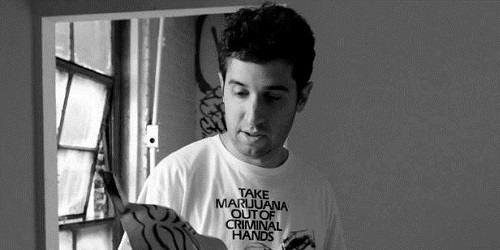
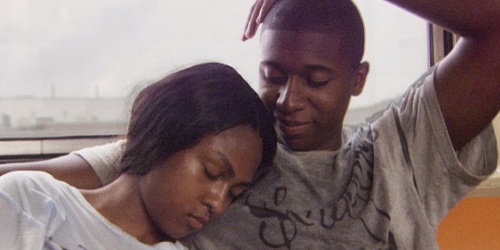
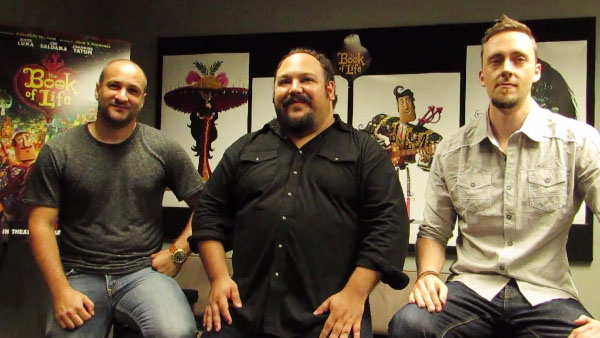

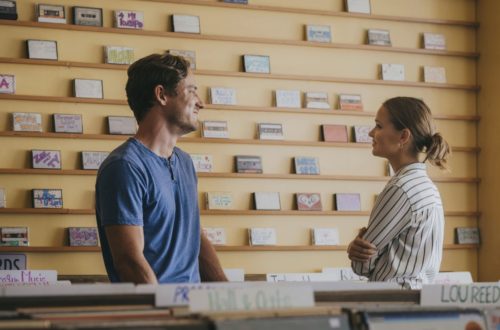
2 Comments
Novia Rozet
great interview Marc. I have never heard of him before. I have to admit that the title is a bit unattractive.
I wish one day I have an eye to eye interview too.
Andrew Crump
Thanks Novia- glad you enjoyed it!
He’s new; this is his first directorial effort, though he has, as mentioned in the article, co-directed projects before. Great guy, and I enjoyed talking to him.
I love the title, personally, but I also love that song, so it’s hard for me to not be biased!